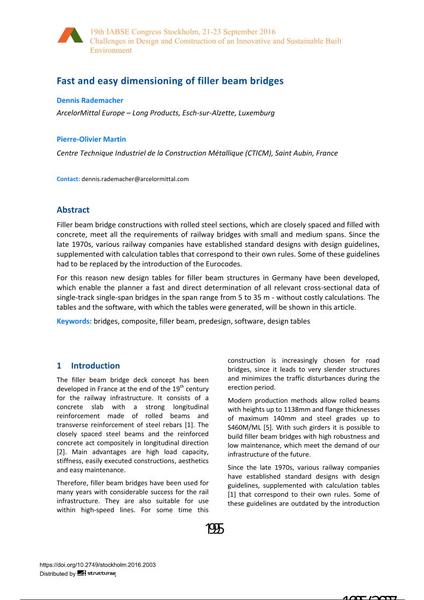Fast and easy dimensioning of filler beam bridges

|
|
|||||||||||
Détails bibliographiques
| Auteur(s): |
Dennis Rademacher
(ArcelorMittal Europe – Long Products, Esch-sur-Alzette, Luxemburg)
Pierre-Olivier Martin (Centre Technique Industriel de la Construction Métallique (CTICM), Saint Aubin, France) |
||||
|---|---|---|---|---|---|
| Médium: | papier de conférence | ||||
| Langue(s): | anglais | ||||
| Conférence: | IABSE Congress: Challenges in Design and Construction of an Innovative and Sustainable Built Environment, Stockholm, Sweden, 21-23 September 2016 | ||||
| Publié dans: | IABSE Congress Stockholm, 2016 | ||||
|
|||||
| Page(s): | 1995-2002 | ||||
| Nombre total de pages (du PDF): | 8 | ||||
| Année: | 2016 | ||||
| DOI: | 10.2749/stockholm.2016.2003 | ||||
| Abstrait: |
Filler beam bridge constructions with rolled steel sections, which are closely spaced and filled with concrete, meet all the requirements of railway bridges with small and medium spans. Since the late 1970s, various railway companies have established standard designs with design guidelines, supplemented with calculation tables that correspond to their own rules. Some of these guidelines had to be replaced by the introduction of the Eurocodes. For this reason new design tables for filler beam structures in Germany have been developed, which enable the planner a fast and direct determination of all relevant cross-sectional data of single-track single-span bridges in the span range from 5 to 35 m - without costly calculations. The tables and the software, with which the tables were generated, will be shown in this article. |
||||
| Mots-clé: |
ponts
|
||||
